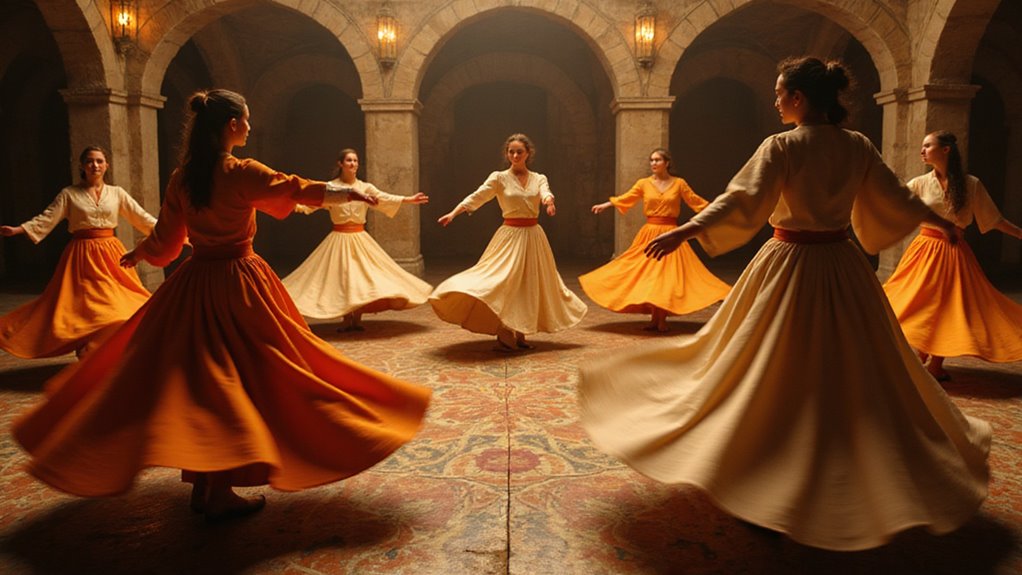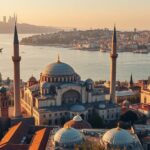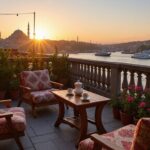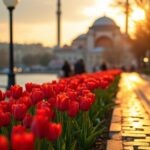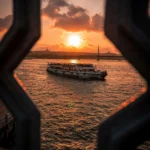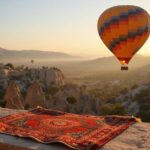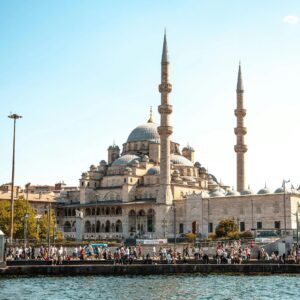Konya and Istanbul offer moving Whirling Dervish sema ceremonies you can attend with timed tickets and guided tours. You’ll travel easily by train or tram, use city cards, and book performances at Hodjapasha, Mevlevi lodges, or museums. You’ll learn symbolism of white robes, tall hats, the ney flute, and rhythmic chants, while observing respectful etiquette, modest dress, and no-flash photography. Continue below to discover practical tips, ticket advice, and contextual history, and local tour recommendations.
Key Takeaways
- Attend an evening sema (whirling) performance in Istanbul to witness devotional music, ney flute, and symbolic white robes and felt hats.
- Book tickets in advance for Hodjapasha, tekkes, or museum shows to secure seating, avoid queues, and respect timed start times.
- Observe respectful etiquette: modest dress, silent participation, no flash photography, phones lowered, and early arrival for best views.
- Combine a sema visit with nearby museums, Ottoman architecture, or a Bosphorus cruise for deeper cultural and historical context.
- Expect a meditative, communal ritual emphasizing divine love, rhythmic chanting, and contemplative states rather than theatrical entertainment.
The Origins of the Mevlevi Order

Konya, where Rumi lived and taught, is widely regarded as the birthplace of the Mevlevi Order, so you should plan a visit to understand its roots. Visit the Mevlana Museum, mausoleum, and nearby bazaars for practical orientation. Konya offers clear historical context about origins, rituals, and cultural continuity that you can explore.
Visit nearby caravanserais, Seljuk architecture, and modest museums to contextualize the mevlevi lineage. Konya provides regular guided tours, reliable transport links, and visitor services during peak seasons.
Visit by train or bus from Istanbul, allow overnight stays, book hotels centrally, and expect crowds. Konya encourages respectful observation, comfortable walking shoes, camera policies, and quiet reflection at key sites.
Visit local information centers for maps, ticketing, and schedule confirmations to streamline your itinerary. Konya rewards patient travelers with meaningful heritage, vivid monuments, and accessible interpretations for independent exploration.
Visit local scholars for archival insight, translations, recommendations directly.
Sufi Philosophy and the Path to Divine Love
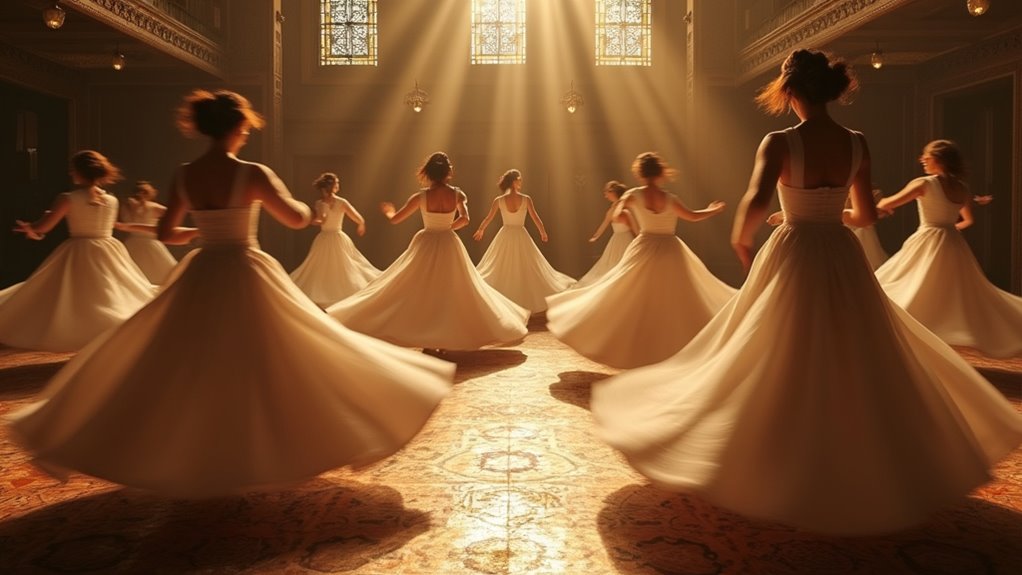
Visit Istanbul’s Sufi lodges, museums, and performance spaces to explore the philosophy of divine love, and you’ll find intimate teachings, poetic manuscripts, contemplative rituals, vivid music, and ethical practice explained clearly. Take the Galata ferry to reach performances, plan evening visits for live music and guided rituals.
Explore museums like the Mevlana exhibits for manuscripts, check hours, book tickets online in advance. Wander the lodges with a local guide, learn ethical practice, and ask about daily dhikr sessions. Attend evening performances for mystical poetry recitals, expect translations, and enjoy spiritual ecstasy moments.
Visit Mevlana exhibits and lodges with a guide—book tickets, join dhikr, and attend evening poetry performances.
Visit Sultanahmet for nearby attractions, combine museum tours, and allow time for reflective walks. Take public transit, use trams and ferries, purchase an Istanbul kart for convenient travel across sites.
Explore Beyoğlu galleries and cultural centers, find contemporary takes, and compare artistic interpretations. Visit hotels near performance venues, book early, and confirm performance schedules before arrival.
The Symbolism Behind the White Robes and Tall Hats
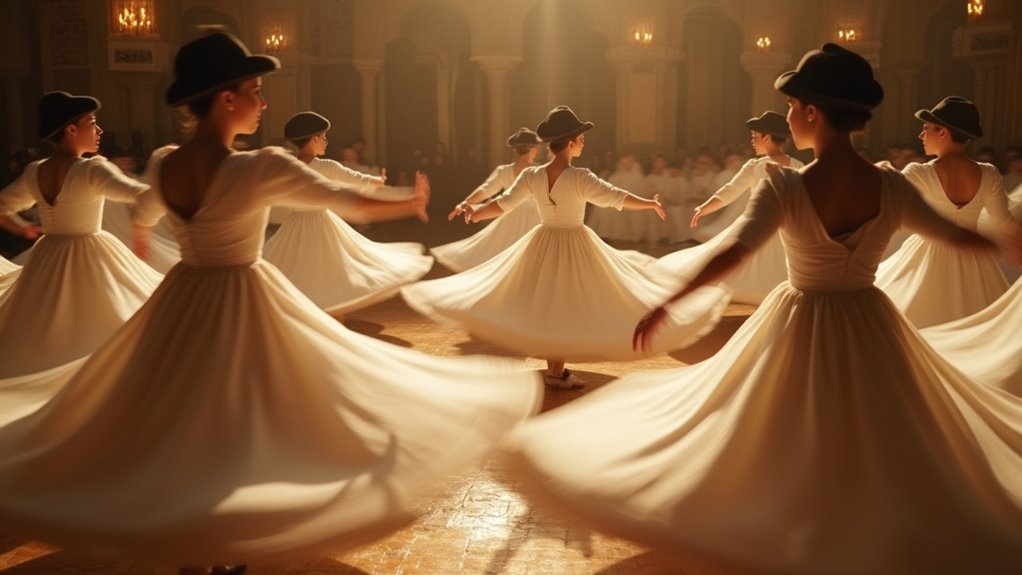
At the Mevlevi lodges, you’ll see white robes and tall felt hats worn during the sema ceremony. In Istanbul, you can join a sema viewing, learn robe significance, and feel spiritual atmosphere.
When you visit, guides explain the hat meanings, the historical symbolism, and the ritual order. On a guided tour, expect clear logistics, timed entry, comfortable seating, and courteous staff.
Near the lodges, museums, cafes, historic sites, and tram stops make planning simple. From Sultanahmet, you’ll reach the performance venues quickly by tram, taxi, or a brisk walk.
At evening shows, respectful dress, quiet attention, advance tickets, and guided commentary enhance your experience. For photographers, observe rules, avoid flash, ask permission, and capture the flowing robes with care.
In travel planning, combine the sema with nearby attractions, a Bosphorus cruise, and local cuisine. At departures, reflect on robe significance, hat meanings, and the liberating spirit you felt.
Musical Instruments and the Role of the Ney
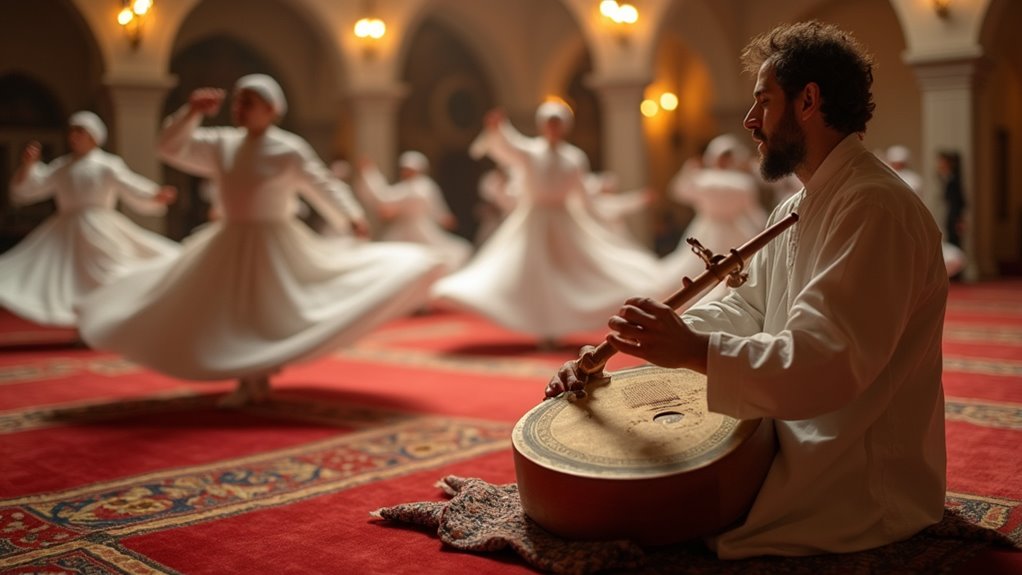
Istanbul’s sema ceremonies pair the white robes and tall hats with a haunting musical thread that guides the ritual and moves the audience. Visit the Hodjapasha or local tekkes to hear ney flute melodies, experiencing Sufi musical prayers in atmospheric halls.
Take guided tours that outline transport options, ticket prices, show times, and nearby cafés for post-ceremony reflection. Explore museum exhibits, Ottoman architecture, and waterfront promenades before attending a performance to ground your visit.
From Sultanahmet tram stops to Taksim taxis, plan logistics early, arrive early for seating, bring ID. Attend respectfully, listen closely, and let the ney’s high, breathy tones liberate your senses with soulful simplicity.
Nearby bazaars, historic mosques, and scenic ferry crossings offer extended itineraries that enrich your cultural itinerary. Try sunset performances for dramatic light, book tickets online, and combine visits with walking tours for freedom-seeking travelers.
Walk the Bosphorus shore, enjoy local cuisine.
Anatomy of the Whirling Ceremony (Sema)

Entering a tekke, you’ll see measured rhythms and graceful postures that shape the sema‘s solemn atmosphere. Istanbul tour guides recommend arriving early to buy tickets, learn seating, and respect dress codes.
Visit the ceremonial hall to observe the preparation, the white gowns, tall hats, and ritual order.
Take public transport, tramlines link Sultanahmet, Beyoğlu, and modern Kadıköy for easy access. Sultanahmet visits combine museums, mosques, markets, and scenic promenades before attending the sema.
Galata neighborhood options include cafés, galleries, ferry rides, and suggested accommodations near performance venues.
Consider guided tours that explain major movements, timing cues, and entrance protocols for respectful viewing.
Travel light, carry water, bring a camera with permission, and plan two hours for transit and the ritual. Bring comfortable footwear to support physical balance during standing, and expect dim lighting, solemn silence.
Experience local hospitality, nearby restaurants, guided museum combos, book tickets online in advance.
Spiritual Meaning of the Whirling Practice
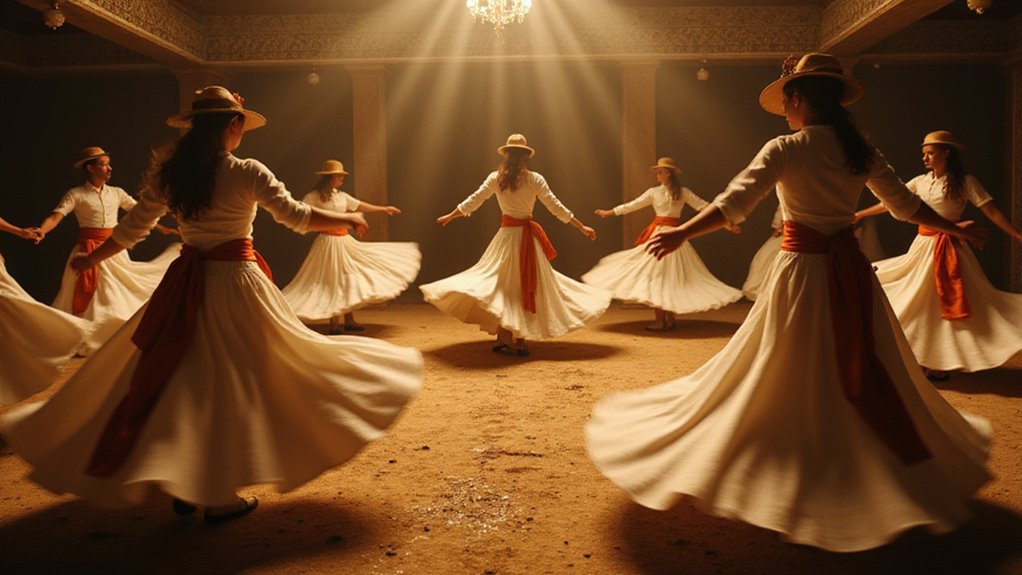
Sultanahmet offers a chance to witness the sema’s spiritual depth, where measured turns and raised hands point toward unity. Visit nearby museums, markets, and coastal promenades for rich cultural context.
Topkapi Palace provides historical backdrop, you can feel contemplative energy that supports inner peace and guided reflections. Explore shrines, centuries-old architecture, and quiet gardens to ground your journey.
Hagia Sophia’s soaring spaces encourage reflection, guiding you toward a sense of divine connection and acoustic resonance. Walk cobbled alleys, cross public squares, breathe deeply to open thoughtful awareness.
Bosphorus excursions offer scenic perspective, they help you relate movement to spiritual rhythm and sunset light. Take guided museum tours, read interpretive signs, note historical continuity and ritual symbolism.
Grand Bazaar visits add sensory richness, where textiles, ceramics, and music deepen cultural understanding and local flavors. Enjoy quiet moments, reflect on intentions, and seek practical transportation options nearby for flexible exploration.
Where to Watch Performances in Istanbul
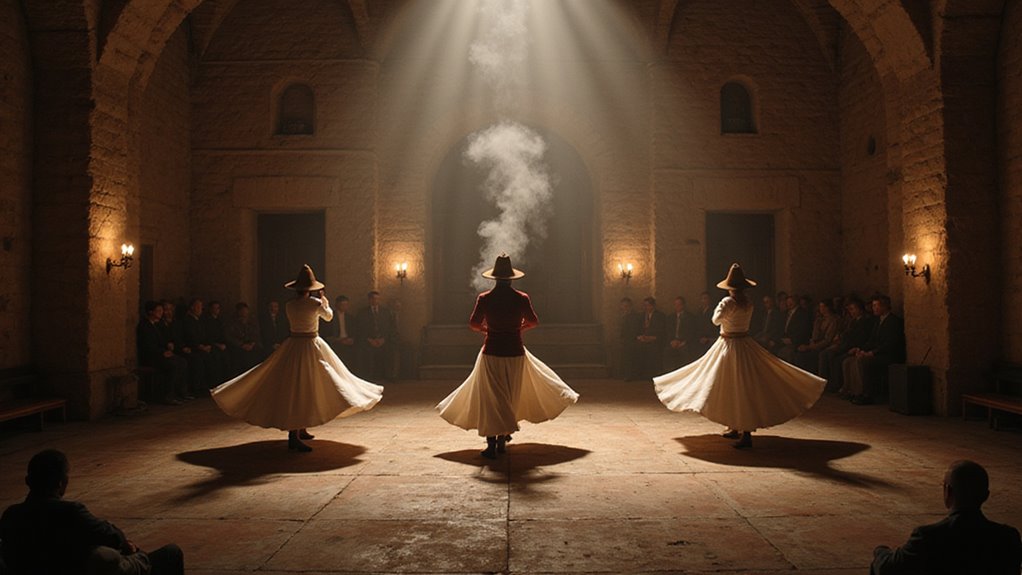
Galata and the historic districts host several venues where you can see sema performances, cultural centers, museums, and small theaters often schedule evening shows. Sultanahmet offers intimate settings.
In Galata and historic districts, discover sema performances and evening shows in cultural centers, museums, small theaters, and intimate Sultanahmet venues.
Take guided tours that include pickup points, transit directions, and clear information on ticket prices and timing. Istiklal Street hosts some theaters.
Visit cultural centers for audio guides, exhibition context, comfortable seating options, and transparent seating arrangements explained in advance. Boats and waterfront venues are scenic.
Choose central locations near tram lines, metro stops, ferry docks, hotels, major landmarks, and nearby dining options for convenience. Kadikoy provides alternative, lively performances.
Book in advance online or at tourist offices, confirm arrival times, compare ticket prices, check seating arrangements, and arrive early to secure good views. Taksim squares and nearby galleries often advertise performances, provide visitor information desks, offer combined cultural passes, and recommend nearby museums, parks, and guided walking routes daily.
Etiquette and How to Respect the Ceremony

Taksim Square and Istiklal Street are convenient meeting points, so plan to arrive early. Sultanahmet offers nearby tram stops, hotels, museums, cafes for easy pre-show planning.
Arrive early, check ticket details at the box office, confirm seating, and ask staff about rules. Remove footwear, leave bags zipped, and prepare for a reverent, calm atmosphere.
Sultanahmet Square or nearby foyers will often note footwear removal, cloakroom options, and accessible seating. Sit quietly, practice silent participation, lower your phone, and avoid photography during sacred segments.
Galata Tower cafes can be good after-show meeting spots, for reflection, conversation, and refreshments. Arrive prepared, wear modest clothing, bring local change for donations, and respect time schedules.
Sultanahmet tram, public buses, taxis offer reliable transfers, plan routes, check maps, expect crowds. Visit nearby museums, Hagia Sophia, Topkapi Palace for broader context, then return to reflect quietly.
Carry a small guidebook, maps, water for comfort.
Modern Life and the Preservation of Tradition

Visit Hagia Sophia and Topkapi Palace, and you’ll see how daily life in Istanbul supports sacred traditions with careful stewardship. Hagia Sophia overlooks Sultanahmet Square, and you can reach it by tram, bus, or walking from nearby hotels.
Topkapi Palace requires timed tickets, so reserve online to avoid queues and long waits. Sultanahmet neighborhood blends markets, mosques, and quiet courtyards that show urban adaptation and living heritage.
Galata Bridge offers scenic transit and easy access to ferry terminals for Bosphorus cruises. Süleymaniye Mosque hosts prayer times you can observe respectfully, check schedules before visiting.
Eminönü ferry docks connect to Asian shorelines, helping cultural continuity through daily exchanges and commerce. Grand Bazaar and spice markets provide accessible shopping, clear signage, and helpful vendors.
Taksim walks reveal contemporary cafes, galleries, and preservation efforts that balance modern life with sacred practice. Beyoğlu tram stops, use Istanbulkart for affordable seamless transit daily.
Personal Reflections: What the Ceremony Evokes
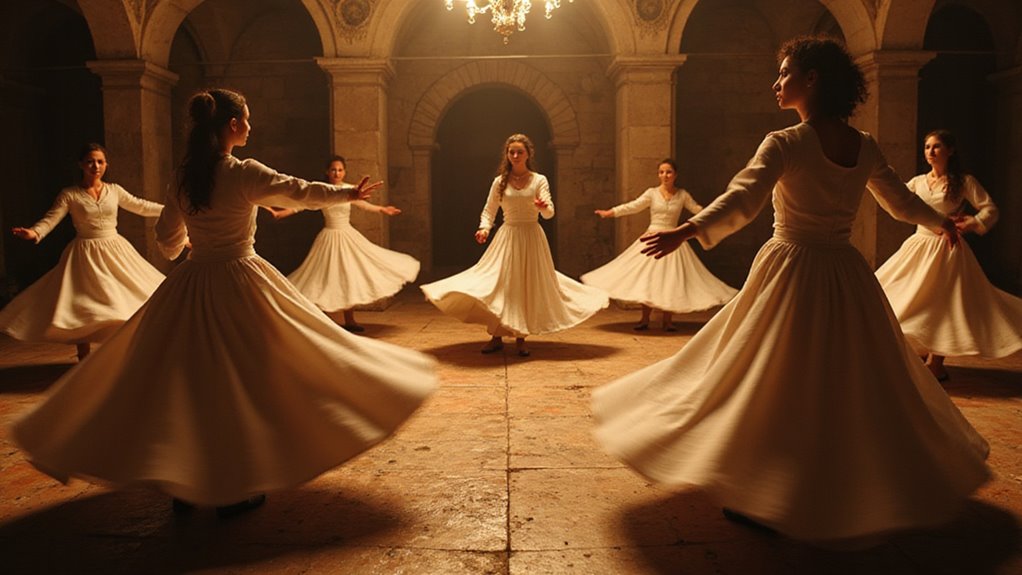
Sultanahmet evenings can feel transcendent when you attend a Whirling Dervishes ceremony at Hodjapasha, where music, motion, and devotion merge. Take the tram to Sultanahmet station, arrive thirty minutes early, and plan for secure cloakroom storage.
Hagia Sophia, Blue Mosque, and Topkapi Palace sit close by, offering rich sightseeing before or after the show. Book tickets online, choose evening performances, and select central seating for best views.
Enjoy the ceremony with an open heart, and notice sensations of inner peace, meditative states, quiet focus, and expanded awareness. Blue Mosque gardens offer calm spaces to reflect, photograph, and absorb atmosphere.
Take guided walking tours, use local maps, and request concise directions from your hotel concierge. Hodjapasha tours run about one hour, conclude with a slow exit, and respect the ritual’s dignity.
Topkapi Palace offers museum displays, courtyards, and stunning Bosphorus views for further exploration. Take taxis for late departures.
Frequently Asked Questions
Can Non-Muslims Participate in a Sema Ceremony as Performers or Active Participants?
Generally, you can’t participate as a performer; sema’s religious restrictions and cultural etiquette reserve active roles for initiated practitioners, though you can respectfully observe—you’re free to learn, ask, and attend public performances as a guest.
Are Short Whirling Workshops Available for Visitors in Istanbul?
Like sunlight spinning on cobbled streets, yes—you’ll join short whirling workshops in Istanbul; they offer duration options from one-hour tasters to half-day classes, with flexible visitor availability so you can freely choose your schedule today.
Do Mevlevi Ceremonies Offer Live Translated Explanations or Guided Commentary in English?
Yes, you’ll often find ceremony translations and English explanations available at public Mevlevi performances, though offerings vary by venue and season, so you’ll want to check schedules or choose guided shows that explicitly include commentary.
What Is the Typical Ticket Price Range for Public Whirling Dervish Performances?
About €20–€60 is typical; like a modest passport stamp, you’ll find variable ticket availability and seating options, from standing spots to reserved seats, so you can choose freely and plan as you roam and wander.
Are Special Sema Performances Held During Islamic Holidays or Cultural Festivals?
Yes, you’ll often find special sema performances during Islamic holidays and cultural festivals; they emphasize spiritual significance, adapt the ceremonial schedule for sacred moments, and let you freely witness profound, liberating ritual and communal joy


